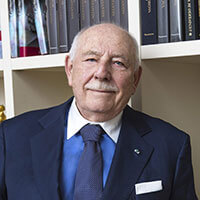For a long time, the two set the standard and served as a reference for Swiss watchmaking. However, recent initiatives have shown that there was still room for new ways to put quality to the test.
Launched ten years ago, Label Qualité Fleurier originated from an idea by Karl-Friedrich Scheufele, co-president of Chopard, and Michel Parmigiani, the acclaimed watchmaker behind the eponymous brand. They were soon joined by Pascal Raffy, owner of Bovet. The objective: to push the envelope for watches that must be 100% Swiss. To date, only 3,000 watches have made the grade. As if this weren’t enough, Omega entered the fray late last year with its Master Co-Axial Officially Certified, a new standard that was developed in partnership with the Swiss Federal Institute for Metrology, and which imposes stringent requirements with regard to resistance to magnetic fields.
To the uninitiated, such a profusion of tests and standards could easily seem like a rather bewildering maze. Not so. From the point of view of the Fondation de la Haute Horlogerie Cultural Council, which it is my honour to chair, two points must be made. The first is of an historical nature. The various initiatives which have been instigated over the course of the decades have all looked to raise the standards of certification, a fact illustrated by the latest rules introduced by the Poinçon de Genève. Granted, different systems can take different approaches, but all aim to guarantee the quality and excellence of a timepiece, whichever route it chooses in its ascension of Everest.
The second is an observation. All these certifications are conducted and guaranteed by bodies that operate independently of the watchmakers themselves. This is a non-negotiable condition, without which such systems would lose all credibility in the customer’s eye. In this light, the mention of the Patek Philippe Seal inevitably raises eyebrows. Not that we are casting doubt on the excellence of the Maison’s timepieces. Neutral certification, carried out by an independent body and not by the brand itself, would only be all the more appreciable. After all, other systems are democratically open to any watchmaker tempted by the challenge. In its desire to be judge and jury of its own merits, Patek Philippe asserts a sovereign stance. And closes the door on any attempts at dialogue with the profession. The question of labels and certification, a matter of significance to watchmaking, will be examined in detail in the next HH Mag.












